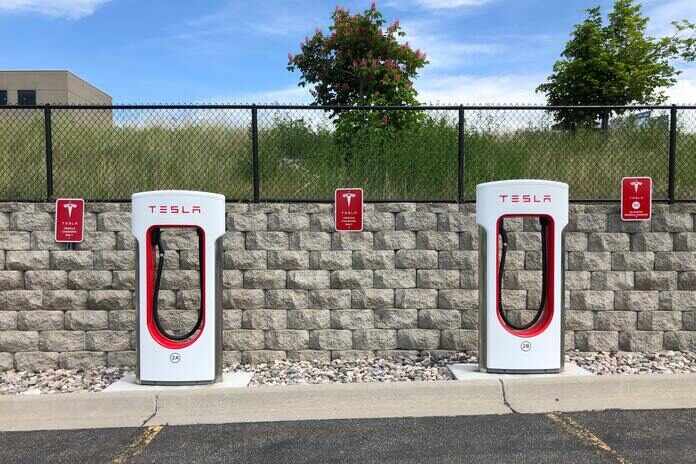Tesla Stock (NASDAQ:TSLA)
We are bullish on Tesla, Inc. (NASDAQ:TSLA) following strong Q4 2022 financial results. In the long run, Tesla has the most production capacity, the highest profit margins in the industry, the biggest share of the global market, cars that are priced competitively, and strong customer demand. The company has a large moat that, given how the industry works now, seems hard to get around. Tesla stock has already gained 63% year-to-date but is still down 36% over the past year.
In the short term, Tesla recently slashed the prices of its cars by a lot, which was a big blow to its competitors, who were starting to ramp up their production capacities. Since Tesla’s margins are higher than those of other EV manufacturers, the company can benefit from lower prices. Other EV manufacturers, on the other hand, may not be able to because their margins are low or even harmful.
Taking into account both supply and demand factors (such as the fact that Tesla expects to make between 1.8 million and 2 million cars in 2023 and that production is expected to grow at its Austin, Berlin, and Shanghai facilities), we expect a surge in the number of Tesla cars. This is because customers are more interested in Teslas now that their prices have gone down, they can get a tax rebate if they buy an electric vehicle, and the industry is struggling to deal with Tesla’s discounting (in-line with management commentary on the recent Earnings Call that demand is outstripping production).
Furthermore, a significant portion of the margin shortfall caused by aggressive discounting is likely to be mitigated by revenue leverage from potentially higher sales, expected deflation in commodity prices, and lower overheads associated with Tesla’s larger factories as production ramps up to full capacity. As a result of increased sales and flattish margins, earnings and free cash flows are expected to rise in the coming quarters and years.
Since Tesla’s financial performance in Q4 2022 was better than expected, we’re more optimistic about the company’s long-term prospects. We’re keeping our Buy Rating and $802/share Price Target, which we got from a 10-year Discounted Cash Flow model that predicts a 40% increase in the number of Teslas made each year, compared to the company’s expected growth of 31% to 46% for 2023.
Key Q4 Results
For the quarter, sales were $21.3 billion, which is 33% more than in Q4 2021; earnings per share were $1.07, compared to $0.68 in the same quarter of 2020. Gross margins went down 360 basis points from the previous year to 23.8% while operating margins went up 129 basis points to 16%. The Q4 2022 net income was $3.69 billion, which was 59% more than the same quarter the year before.
During that time, the company had operating cash flows of $14.7 billion and free cash flows of $1.42 billion. At the end of Q4 2022, the company had $22.2 billion in cash and cash equivalents and $1.6 billion in long-term debt, according to its balance sheet.
For FY2022, sales were $71.5 billion, which was 51% more than FY2021, and earnings per share were $3.62, which was more than $1.63 the year before. Gross margins went up by 32 basis points to 25.6% from the previous year, while operating margins went up by 464 basis points to 16.8%. The period’s net income was $12.6 billion, which was 128% more than last year’s.
Tesla is in an excellent position to gain from price cuts. Early in January, the company cut the prices of its most popular cars in the U.S. The Model Y now costs $52,990, and the Model 3 now costs $53,990. Since Tesla also lowered the prices of its Model S and Model X cars, the move looks like a well-thought-out plan.
We think that the heavy discounting was caused by the following:
- The expectation is that the supply of EVs will likely be higher than the demand in 2023.
- An attempt to get Tesla’s MSRPs below the $55,000 mark, which is needed for customers to get the $7,500 tax rebate when they buy an EV.
- An attempt to help customers pay for some of the higher interest rates, which make it much more expensive to buy a car.
Regarding competition, the price cuts help Tesla because its profit margins are much higher than those of its peers. During Q3 2022, Tesla’s gross profit per car was $15,653, while General Motors was $9,969, BYD Company Limited’s was $5,456, and Ford’s was $3,115. During the same period, Tesla made $9,574 per car, GM made $2,150, BYD made $1,575, and Ford made $927. Due to how their margins work, competitors will find it hard to lower their EVs’ prices, forcing some firms to go out of business.
In this way, it’s important to note that in 2022, 65% of all revenue from the EV industry came from Tesla, followed by Ford at 7.6% and GM at 3.5%. Even though Model Y costs more than F’s best-selling EV model, Mach-E, it costs less than the company’s more expensive EV models. In terms of EVs made by GM, the Model Y starts at $10,000 less than the Cadillac Lyriq, which is a similar-sized EV SUV.
Tesla’s aggressive discounts on its cars and industry-leading production capacity put the company in an excellent position to take market share from its competitors.
Increase the number of cards you can make. Tesla has said that it wants to open a new factory soon. This is part of a plan to build 10 to 12 new factories over the next few years. According to rumors, the company is about to decide in Indonesia. Since the country has 25% of the world’s nickel deposits, which are a crucial part of the battery packs used in Tesla cars, the idea seems possible.
Last summer, Tesla opened two new buildings. One was in Austin, Texas, and the other was in Berlin, Germany. Both factories can make more than a quarter million cars a year. The company announced plans to spend $750 million to add 1.4 million square feet to its Austin factory. This will bring the factory’s total floor space to 5.6 million square feet. With the extra space, battery packs and drive units will be made, battery cells will be tested, and a die shop will be built. The first Tesla Cybertrucks should start coming out of the factory this summer. In the future, the plant will also make Tesla Semis, according to plans.
Also, China’s resurfacing of COVID-19 cut the Shanghai factory’s ability to make more than 750,000 cars per year by a lot. Normal production will likely start again soon as the country changes its “zero tolerance” policy toward the pandemic. Also, the Berlin plant should be able to make as much as it can this year. Overall, Tesla thinks that its current and future factories worldwide will be able to make more than one million cars per year in the long run.
The number of people who want to buy Teslas will go up soon, so an increase in car production might come at a good time.
In conclusion, both GM and Ford have said in the past that they want to take Tesla’s place as the leader in the EV industry. Given how the company and industry work, it looks like the scenario will never happen. Tesla can make things the best margins in the industry, pricing power, and customer demand. Also, it is much better than the feature that lets the car drive itself. Tesla’s first-mover advantage, which it has kept and built on, almost guarantees that it will always be the leader in the electric vehicle (EV) market. The competition is scattered, and it looks like they need to be stronger to take on Tesla.
At its current price, Tesla stock gives investors a big chance to make money over the long term.
Featured Image: Pexels















